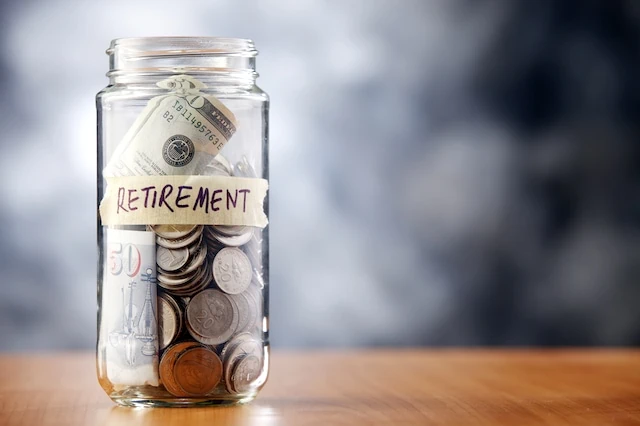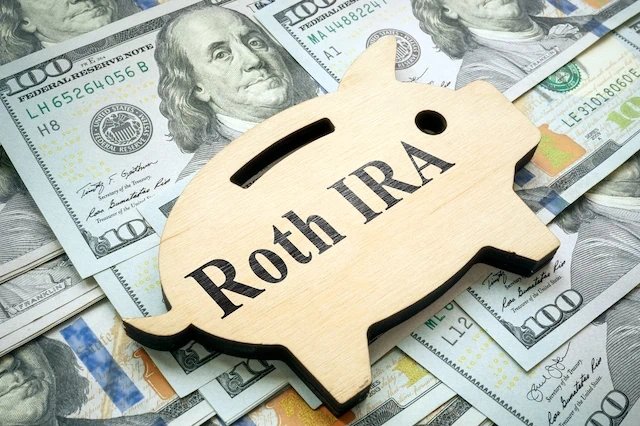Getting access to a 401(k) is a significant step towards saving for a comfortable retirement. The rule is simple: the more you contribute (early), the better. But life presents other financial priorities too, such as getting married, buying a home or car, or funding your child’s education. This scenario might have you questioning just how much you really need to funnel into your 401(k) each year.
That’s a tough question. Is contributing just enough to get the full employer match sufficient? Or do you need to totally max out your 401(k) every year? Perhaps the sweet spot is somewhere in between.
Just remember: The best you can do when trying to figure out how much money you’ll need in retirement is to come up with an approximation. So, how much you need to contribute to your 401(k) plan is just an estimate, too.
Fortunately, there are some guidelines on what works for most people who are trying to squirrel away enough money for their golden years. We’ll cover those guidelines, give you some targets to aim for, and suggest some other ways to supplement the savings in your 401(k) plan.
Knowing you’re saving enough toward retirement offers peace of mind, which is invaluable in itself.
Table of Contents
What Is a 401(k)?

A 401(k) is a common retirement savings plan offered by many employers. These are tax-advantaged accounts generally funded by employees who choose to participate in the plan. Many plans also include an employer match.
How the money in the plan is treated for tax purposes depends on whether your account is a traditional 401(k) account or a Roth 401(k) account. Some employers allow you to put money in both types of accounts.
Traditional 401(k) Accounts

If you have a traditional 401(k) account, “pre-tax” dollars are deposited into the account. That basically means your contributions aren’t included in your taxable income (i.e., the money is deposited before taxes are imposed). Your contributions grow tax-free, but you eventually must pay tax on the money when you withdraw it from the account.
Young and the Invested Tip: If you expect to be in a lower federal tax bracket when you retire, contributing to a traditional 401(k) account can save you money. Instead of paying taxes at a higher rate while you’re still working, you can pay taxes at a lower rate when you take money out of the account in retirement.
In addition to any income tax due, you generally must pay a 10% penalty if you take money out of a traditional 401(k) before you turn 59½ years old. Once you turn 59½, there’s no penalty, but distributions are still subject to income tax.
You must begin taking money out of a traditional 401(k) each year when you turn 73. These forced withdrawals are called required minimum distributions (RMDs). Beginning in 2033, RMDs won’t be mandated until you turn 75.
Roth 401(k) Plans

Contributions to a Roth 401(k) account are made with “after-tax” dollars. In other words, money taken out of your paycheck and put in a Roth 401(k) account is included in your taxable income (i.e., contributions are made after taxes are imposed). However, not only does money in a Roth 401(k) grow tax-free, but you don’t pay any tax when you withdraw the funds in retirement.
You can withdraw contributions to a Roth 401(k) account at any time without having to pay tax or the 10% penalty. However, you generally must pay tax and the penalty on earnings withdrawn from the account if you aren’t 59½ years old or the account isn’t at least five years old.
At this point, RMDs from a Roth 401(k) account are generally required when you turn 73. However, RMDs will no longer be required from Roth 401(k) accounts starting in 2024.
Related: Retirement Saver’s Tax Credit: What Is It, How Much, Who’s Eligible + More
How Does a 401(k) Plan Work?

Employees who participate in a 401(k) plan choose a percentage of their income to be automatically deducted from their paycheck and deposited into their 401(k) account. In most cases, you can contribute part of a bonus as well, assuming it doesn’t put you over the annual contribution limit.
Money in the account (including any employer match) is invested so that it can grow over time. Usually, the employee determines how the funds are invested. However, most of the time, there’s only a limited number of mutual funds (including target-date funds) to choose from, although a few exchange-traded funds (ETFs) might be available in rare cases. You most likely won’t be able to put your money in individual stocks, bonds, precious metals, real estate, or other types of investments.
401(k) Contribution Limits

For 2023, the annual contribution limit for a 401(k) plan is $22,500 ($23,000 in 2024). Workers aged 50 and older can also put in additional “catch-up” contributions. The catch-up contribution limit is currently set at $7,500. So, employees who are at least 50 years old can contribute a total of $30,000 to their 401(k) plan for the 2023 tax year ($30,500 in 2024).
Related: Best Fidelity Retirement Funds for a 401(k) Plan
401(k) Employer Match (Free Money)

Many employers will offer a company match tied to your 401(k) plan contributions. The employer match is essentially free money and can make it much easier to save for retirement.
Related: How to Get Free Money Now: 15 Ways to Earn Money Today]
Some businesses will offer a company match up to a predetermined percentage of your 401(k) contributions. For instance, an employer might match 100% of your contributions, up to 5% of your annual salary. In that case, if you earn $60,000, the first $3,000 of your contributions ($60,000 x .05) is eligible for the full match. That’s an extra $3,000 in your retirement account—without having to work any extra hours!
Related: Best Vanguard Retirement Funds for a 401(k) Plan
Other employers match contributions up to a set dollar amount, rather than a percentage, but this is much less common. When considering multiple job offers, make sure to compare each employer matching program as part of your overall compensation.
Some businesses don’t offer any employer match, while other companies are particularly generous. In some situations, with all other employment factors being equal, it might be better to accept a job with a slightly lower salary, but a high 401(k) match, over a job with a higher salary, but no company match.
Related: What’s Your Standard Deduction?
The Ideal Retirement Savings Goal? Replace 80% of Your Income

As a rule of thumb, aim to replace 80% of your current income with retirement savings. For example, if you currently make $100,000 each year, you should try to save enough to have at least $80,000 per year when you retire.
Related: Best Schwab Retirement Funds for a 401(k) Plan
It might seem like you would need to replace 100% of your annual salary if you want to maintain your current lifestyle, but there are several reasons why your expenses should be lower in retirement.
To start, during your working years, you’re putting a portion of your income into retirement accounts, such as your 401(k). Once you reach retirement age, you won’t have to put money in retirement saving plans anymore.
Additionally, you’ll be receiving Social Security benefits when you retire. Note, however, that the percentage of your current income covered by Social Security is usually lower for higher-income retirees than for lower-income retirees.
Related: How Are Social Security Benefits Taxed?
Thanks to Medicare, your health insurance expenses should be lower in retirement, too. However, your health might not be as good as you age, so you’ll still have to pay for some medical expenses.
With any luck, your mortgage will be paid off before you retire, which will also lower your housing costs. And many retirees “downsize” to a smaller and less expensive home.
Not working should cut down on your commuting expenses, too.
If you have children, they probably will be out of the house and done with their education by the time you hit retirement. That should save you a lot of money compared to what you might be paying for your children now.
Many people (but not all) also pay less in income taxes during retirement, because they’re earning less than they did when they were younger.
For all of these reasons, aiming to replace 80% of your current income is usually sufficient. However, if you expect to have costly new expenses during retirement, such as for travel abroad or known medical issues, you might try to save a bit more now.
Related: Can I Retire at 60 with $500K? [YES! See Examples of How]
What Percentage of My Annual Salary Should I Contribute By Age?

It’s best to think in terms of percentages, rather than set dollar amounts, when asking yourself “how much should I contribute to my 401k?” Basing your contributions on a percent of your earnings makes more sense, since the cost of living varies greatly by location and people are accustomed to different lifestyles.
Related: 11 Ways to Avoid Taxes on Social Security Benefits
Experts generally agree that saving around 15% of your gross income in a 401(k) is a good percentage, regardless of your age. This includes any employer contributions. If you can’t contribute this much in your 20s or 30s, try to get there by age 40.
Of course, the more you contribute when you’re young, the better. If you don’t start contributing to a 401(k) until later in life, you might need to contribute a higher percentage when you’re older to catch up. Fortunately, if you are still behind when you’re in your 50s or older, the tax code permits catch-up contributions each year so you can add extra money to your 401(k).
Related: Don’t Believe These 17 Social Security Myths
The percentage that’s manageable will also vary by person. For example, if you have a lot of high-interest debt, you’ll probably have to contribute a lower percentage of your wages to your 401(k) until your debt is lowered.
People who have minimal living expenses, such as those living with their parents for free, can benefit greatly by contributing a higher percent of their salary to a 401(k) account. Boosting your contribution level by just a few percentage points can make a huge difference when you’re saving for retirement.
401(k) Saving Targets By Age

Take a look at the following age-based retirement saving targets below to see if you’re on the right track so far:
— Age 30 = 1x salary
— Age 40 = 3x salary
— Age 50 = 6x salary
— Age 60 = 8x salary
— Age 67 = 10x salary
Just remember that these are guidelines, not the gospel. If you’re behind the projected amount, you can still find ways to catch up.
These guidelines were established by Fidelity with the assumption you started saving 15% of your income for retirement at age 25, invest more than half of your savings in stocks over your lifetime, and plan to retire at age 67.
Related: Best Target-Date Funds: Vanguard, Fidelity, and Schwab
If you want a customized look at your retirement savings, consider talking to a certified financial planner. Depending on your expected retirement age and whether you intend to live lavishly or frugally in retirement, your personalized savings goal might be different than the amounts shown above.
Related: How Much to Save for Retirement by Age Group [Get on Track]
Should I Max Out My 401(k) in My 20s? 30s?

Whether you should max out your 401(k) in your 20s and 30s depends on your financial situation. If you can afford to do so, you should absolutely max out your 401(k) when you’re young, since you can benefit the most from compound growth in those early years.
Related: The 9 Best ETFs for Beginners
Always contribute enough to get the maximum employer match, since the match is considered free money.
Next, a good strategy is to max out a health savings account (HSA)—if you’re eligible—and an individual retirement account (IRA) to take advantage of the tax benefits those accounts offer.
Related: HSA Contribution Limits [2024 + 2025]
If you can afford to invest more after that, maxing out your 401(k) is an excellent choice in your 20s and 30s. Setting more aside might mean you have to live a bit more frugally now, but the earnings can be worth it in the long run.
Related: 7 Best Growth Stocks to Buy [Find Your Edge]
Just make sure you also have enough to pay your monthly bills and have an emergency fund in place, since you don’t want to make early withdrawals from a 401(k) account.
The Younger You Are, The More Compounding Works for You

People who begin investing when they’re young have a substantial advantage over those who don’t start until later in life. In general, the longer money is invested, the more time it has to grow.
Related: 7 Best Fidelity ETFs for 2024 [Invest Tactically]
Workers who invest heavily in a 401(k) plan early in their careers have time on their side. Thanks to compound interest, money in their 401(k) can grow significantly by the time they reach retirement.
If you wait until you’re older to start making 401(k) contributions, you miss out on a lot of growth and have to invest more overall money to have the same amount in the end.
Related: Best Fidelity Retirement Funds for an IRA
What Is the 4% Withdrawal Rule?

The idea behind the so-called “4% rule,” which investment advisor Bill Bengen came up with back in 1994, is that retirees should find the sum of all of their investments and then withdraw 4% of the total during their first year of retirement. In the following years, you should adjust the amount withdrawn according to the rate of inflation.
Related: 7 Best Schwab ETFs to Buy [Build Your Core for Cheap]
For example, let’s say your total retirement investments equal $1 million. You would withdraw $40,000 in your first year of retirement. Let’s say the cost of living increased by 3% that year. The following year, you would increase your withdrawal to $41,200 ($40,000 x 1.03).
If you abide by this rule, you theoretically shouldn’t have to worry about outliving your retirement savings.
Is the 4% Rule Out of Date?

Unfortunately, however, this rule is now considered outdated—even by the person who came up with it! Bengen has increased his own withdrawal strategy to 4.7% and suggests more conservative investors might want to consider about 4.5% while inflation soars. Other experts think 4% isn’t practical for many people and a slightly lower rate is more reasonable.
Related: Beginner’s Guide to Fidelity Target-Date Funds
While it’s useful to know the 4% rule, you should personalize your withdrawal percentage to fit your situation. For example, the original rule assumes your portfolio is roughly 50% stocks and 50% bonds, but yours might be quite different.
It also assumes your retirement will last 30 years, but it’s impossible to predict exactly how many years your retirement money will need to last. Certainly, if you plan to retire early or work after the typical retirement age, you’ll need to adjust your retirement planning accordingly.
Related: The 7 Best Dividend ETFs [Get Income + Diversify]
Furthermore, while money withdrawn from a traditional 401(k) is taxed when withdrawn, you might have other retirement savings accounts, such as a Roth 401(k) or Roth IRA, where withdrawals are tax-free. This will also affect your personal calculations.
So, rather than strictly following the rule, use it as merely a guideline and withdraw as much from your 401(k) each year as makes sense for your situation.
Related: 7 Best Fidelity ETFs for 2024 [Invest Tactically]
Also Invest in Traditional IRAs, Roth IRAs + HSAs

Don’t feel like you have to (or should) rely solely on your 401(k) plan for your retirement savings—especially if you want to put away more for retirement during the year than the annual 401(k) contribution limits allow. You’ll typically have more investment options with other types of retirement accounts, too.
Related: IRA vs. 401(k): How These Retirement Accounts Differ
The accounts below are excellent ways for employees to supplement their 401(k) retirement savings. Take advantage of them as much as possible as you build your retirement nest egg.
1. Traditional IRAs

Anyone with earned income can open a traditional IRA. This is another type of tax-deferred retirement account. In other words, contributions aren’t taxed (thanks to a tax deduction), money in the account grows tax-free, but you then have to pay taxes on withdrawals when you retire.
Related: Best Vanguard Retirement Funds for an IRA
You can contribute up to $6,500 to a traditional IRA for the 2023 tax year ($7,000 in 2024), which is a joint limit for all your traditional and Roth IRAs. Workers aged 50 and above can also make additional catch-up contributions up to $1,000 each year.
RMDs begin at age 73. However, as with traditional 401(k) accounts, the RMD age will increase to 75 in 2033.
2. Roth IRAs

You also need earned income to open a Roth IRA, but income limits apply. For 2023, if your modified adjusted gross income is over $153,000 (single) or $228,000 (married filing a joint tax return), you can’t contribute to a Roth IRA for the tax year ($161,000 or $240,000 in 2024, respectively).
The same annual contribution limits for traditional IRAs also apply for Roth IRAs.
Related: IRA Contribution Limits for 2024 [Save More in 2024]
However, unlike traditional IRAs, Roth IRAs are funded with after-tax dollars. Money in the account grows tax-free, and there’s no income tax on withdrawals during retirement. This makes Roth IRAs an excellent choice for anyone who expects to have a higher income during retirement.
Distributions from a Roth IRA aren’t required until the account owner dies.
3. Health Savings Accounts (HSAs)

An HSA is a powerful retirement savings vehicle because it has several tax advantages. Contributions are either excluded from your taxable income or tax deductible, depending on if the account is set up through an employer or you open it yourself.
Related: Best Vanguard Funds to Hold in an HSA
Earnings grow tax free. Any money withdrawn to pay for qualified medical expenses isn’t taxed. However, HSA funds used for non-medical costs before you turn 65 are hit with a 20% penalty.
For 2023, the annual contribution limits are $3,850 for people with self-only health insurance coverage and $7,750 if you have family coverage ($4,150 or $8,300 in 2024, respectively).
To qualify for an HSA, you must be covered under a high-deductible health plan. You also can’t receive Medicare, be covered by any other disqualifying insurance, or be claimed as a dependent on someone’s tax return.
If you’re unsure if you qualify for an HSA, talk to your health insurance provider or a financial advisor.
Related: How to Use Your HSA for Retirement
The Importance of Emergency Savings

For most retirement accounts, including a 401(k), the Internal Revenue Service charges a 10% early withdrawal penalty, in addition to regular taxes, if you pull funds out of the account before you’re 59½ years old (although there are exceptions). Therefore, unless you’re in an extremely dire situation, you should avoid taking money out of a retirement account early for emergencies.
Instead, it’s essential to have an emergency fund in case you lose your job, your home is hit by a natural disaster, you’re in a car accident, or you face another situation that costs more than your usual budget allows.
The standard recommendation is to set aside enough money to cover at least three to six months’ of your regular expenses. However, you should keep in mind the stability of your job and whether you have other safety nets when setting up an emergency fund. (Automatic savings apps can help with building these funds in the background.)
Since you always want fast access to an emergency fund, it shouldn’t be tied up in any illiquid investments. It’s popular to store emergency savings in a high-yield savings account, a certificate of deposit (CD), or other cash alternatives that earn a short-term yield. (You can also stagger the maturity dates of certificates of deposit in a “CD ladder.”)
How Much Retirement Savings Is Enough?
![How Much to Save for Retirement by Age Group [Get on Track] 1 annuity saving retirement money grow](https://wealthup.com/wp-content/uploads/annuity-saving-retirement-money-grow.jpg.webp)
When it comes to how much you need to set aside for retirement, the first thing you need to know is there’s no magic number for everyone. Retirement savings goals vary by person.
Related: How Much to Save for Retirement by Age Group [Get on Track]
My goal is helping you figure out how to determine your own number.
The amount of retirement income you will need depends on your planned retirement age, where you plan to live, and other factors. Fortunately, after asking yourself a few questions, you’ll be able to estimate realistic retirement goals.
Sir Arthur Conan Doyle’s famed sleuth, Sherlock Holmes, famously says, “To begin at the beginning.” In other words, if you want to know where you need to go to get where you want, you should begin at the beginning.
For this retirement savings exercise, though, I say we need the reverse—we’ll begin at the end and work our way backward. That way, we can set our desired outcome and understand what needs to happen now to get where we want later in retirement.
Use the following factors to more accurately determine how much you need to save for retirement.
Related: 5 Best Vanguard Retirement Funds [Start Saving in 2024]
Factor #1: Retirement Age
![How Much to Save for Retirement by Age Group [Get on Track] 2 senior couple beach retirement savings account](https://wealthup.com/wp-content/uploads/senior-couple-beach-retirement-savings-account.webp)
When will you retire? If you’re hoping for an early retirement, you’ll need more money saved than someone who retires at the customary retirement mark (age 65). Likewise, retiring later generally means needing less money.
Your career path might make a significant difference in your retirement age. Does your job involve hard labor that will become more challenging as you age? Or do people in your profession often continue working past the standard retirement age?
Also consider your health, life priorities, and what’s realistic for your financial situation.
Related: 12 Best Long-Term Stocks to Buy and Hold Forever
Factor #2: What Lifestyle You Want in Retirement

Many people plan to maintain roughly the same lifestyle as they have during their working years. Others work hard for decades so they can live more lavishly during retirement. Do your retirement goals include frequent travel? Do you want to treat yourself to a new car or home renovations? Retirees often spend a lot of time (and money!) spoiling grandchildren.
Make sure the retirement income you’re planning for is high enough that it won’t just cover the basics, but will let you have a little fun, too.
Related: 10 Financial Gifts for Babies, Kids & Grandkids [No More Toys]
Factor #3: Where You Want to Live

Both the city you plan to live in and the type of home you plan to stay in will affect how much money you need for retirement.
Those who currently live in a high-cost-of-living area and plan to stay there will need more money than those who plan to move to an area with a lower cost of living. If you own a large house and plan to downsize, that will help curb expenses.
However, if you rent, you should assume costs will rise over time and you might need a higher annual income for retirement than you expected. The same goes for anyone who plans to move to an expensive assisted-living facility.
Related: 6 Ways to Invest in Apartment Buildings [w/Minimal Effort!]
Factor #4: 4% Rule (Or Your Personalized Safe Withdrawal Rate)

As discussed above, the 4% Rule is the guideline that you should withdraw only up to 4% of retirement savings during your first year of retirement. After that, you should adjust the amount for inflation each year and withdraw that amount.
While the creator thinks this rule is outdated, it’s still very much a factor into calculating how much you need to save for retirement. To that end, based on your unique circumstances, you might need to withdraw more or less from your retirement savings to live the retirement you want.
Related: How Much Should I Contribute to My 401(k)?
Factor #5: Budget for 80% of What You Currently Make

Lastly, as we also touched upon previously, you’ll need roughly 80% of your pre-retirement annual income, provided you aren’t planning on upping your lifestyle.
Because you’ll hopefully have fewer expenses heading into retirement and no money getting invested into your retirement accounts, it’s generally a safe assumption that you’ll need less income during retirement than you did during your working year. Obviously, this depends on your unique circumstances, wants, and needs. Your mileage may vary.
Please Don’t Forget to Like, Follow and Comment

Did you find this article helpful? We’d love to hear your thoughts! Leave a comment with the box on the left-hand side of the screen and share your thoughts.
Also, do you want to stay up-to-date on our latest content?
1. Follow us by clicking the [+ Follow] button above,
2. Subscribe to The Weekend Tea, our weekly newsletter to read more about investing, spending, taxes, and more, and
3. Give the article a Thumbs Up on the top-left side of the screen.
4. And lastly, if you think this information would benefit your friends and family, don’t hesitate to share it with them!





